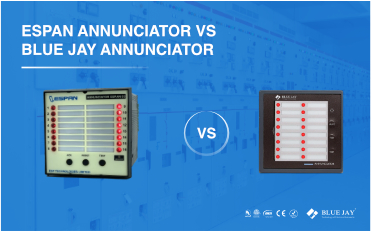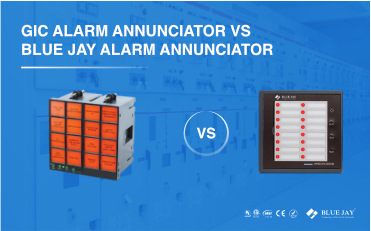
Espan Annunciator vs Blue Jay Annunciator
In critical applications such as switchgear, GIS (gas-insulated switchgear),

In modern industry and automation, alarm annunciators are essential components for ensuring safe equipment operation and efficient maintenance of personnel. When system failures occur, they quickly and accurately sound warnings, transforming potential risks into manageable information. Among the numerous brands, GIC and Blue Jay are two highly regarded alarm annunciator manufacturers in the market.
This article will delve into the core differences and respective advantages of these two brands’ alarm annunciators. Through a detailed comparison across multiple dimensions, including functional features, scalability, user interface, and market positioning, we aim to provide professionals involved in product selection and procurement with a clear and comprehensive reference, helping you make the most informed decision based on your project needs.
While GIC and Blue Jay annunciators are sometimes used as alternatives, there are some differences between them.
The GIC Alarm Annunciator product line is focused on high scalability, making it suitable for small to medium-sized complex projects. GIC offers a wide range of alarms from 2 up to 48 channels, including options such as 6, 8, 14, 16, 22, 24, 30, 32, and 48 channels, each with its own dedicated alarm state. These are ideal for industrial automation process monitoring and control systems.
In contrast, Blue Jay alarm annunciators are compact, panel-mount devices focused on a single product line for smaller-scale applications. Blue Jay provides annunciators with a more limited range of 4 to 16 channels, including 4, 6, 8, 10, 12, and 16 channel options. These are well-suited for integration into power distribution systems or smaller control panels.
The GIC annunciator features a modular, window-style interface with three different window sizes (small: 34 x 31 mm, medium: 68 x 31 mm, and large: 68 x 63 mm) and six selectable colors (red, yellow, blue, green, amber, and white). Alarm information is conveyed through a combination of lighting color and flashing patterns, offering a highly customizable display.
In contrast, the Blue Jay fault annunciator utilizes a text panel along with LED lights. When a fault occurs, the corresponding LED illuminates, and the text panel provides a clear, written description of the fault’s cause.
The GIC annunciator is equipped with four SPDT relay outputs, with two dedicated to group alarms, one for an external hooter, and another for a ring-back sequence. In contrast, the Blue Jay annunciator features three relay outputs, which are typically used for basic fault alarming and tripping.
GIC allows for customization of its annunciators’ window size, color, and channel count. Blue Jay also offers custom channel counts, but its customization options are far more extensive, allowing the entire annunciator to be tailored from its physical size to its specific functions to meet your project’s needs.
If your project is large-scale, requires numerous signaling points, and anticipates future expansion, while also requiring highly complex and specialized alarm logic (such as ISA-compliant sequences), the GIC alarm annunciator is a more professional choice. It focuses on providing extremely fast response times and specialized relay output functionality, fully meeting the demands of complex industrial environments.
For smaller projects with a fixed number of signaling points and a tight budget, the Blue Jay alarm annunciator offers a superior solution. Its integrated design and clear LCD screen make it easy to install and configure, meeting general alarm needs while offering excellent value for money.

In critical applications such as switchgear, GIS (gas-insulated switchgear),

Both the EES Annunciator and Blue Jay Fault Annunciator





